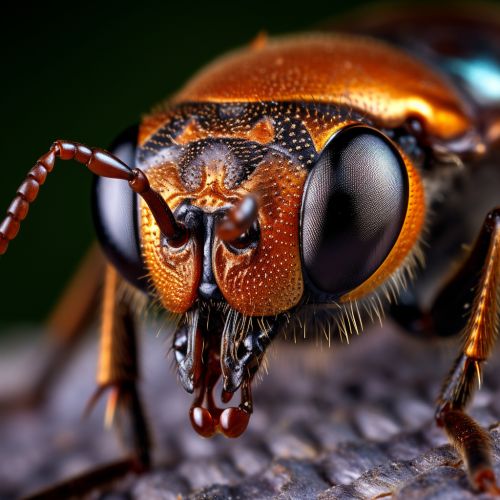Sex pheromones
Introduction
Sex pheromones are chemical substances secreted by animals to elicit specific behavioral responses in members of the same species. These chemical compounds are a form of communication used primarily for attracting potential mates, but they can also serve other functions such as marking territory or signaling danger. Sex pheromones are found in a wide variety of species, including insects, mammals, and even plants.
Chemical Structure and Production
Sex pheromones are typically small, volatile molecules that can easily diffuse through the air. They are produced in specialized glands and then released into the environment. In mammals, these glands are often located in the skin or hair follicles, while in insects they are typically found in the abdomen or thorax. The exact chemical structure of sex pheromones varies greatly between species, but they often contain functional groups such as alcohols, aldehydes, and esters.


Detection and Response
Sex pheromones are detected by the olfactory system, which is highly sensitive to these chemical signals. In mammals, the main olfactory system and the vomeronasal organ (VNO) are both involved in pheromone detection. The VNO, also known as Jacobson's organ, is particularly important for detecting pheromones related to reproduction and social behavior.
Once detected, sex pheromones can trigger a variety of behaviors. In many species, the primary function of sex pheromones is to attract potential mates. For example, female moths release a specific pheromone to attract males from a distance. In other species, sex pheromones may be used to signal readiness for mating, to mark territory, or to signal dominance or submission.
Role in Reproduction
In many species, sex pheromones play a crucial role in reproduction by signaling the presence and readiness of potential mates. For example, in many species of insects, females release a specific sex pheromone when they are ready to mate. This pheromone attracts males, who then attempt to mate with the female.
In mammals, sex pheromones can also signal the female's reproductive status. For example, in many species of rodents, males can detect changes in the female's sex pheromones that indicate whether she is in estrus (the period of sexual receptivity) or not.
Sex Pheromones in Humans
The existence and role of sex pheromones in humans is a topic of ongoing debate. While it is clear that humans, like other mammals, have a functional vomeronasal organ capable of detecting pheromones, the exact nature and function of human sex pheromones remain unclear.
Some research suggests that humans may produce and respond to sex pheromones in subtle ways. For example, studies have found that women's preferences for men's body odors can change throughout their menstrual cycle, suggesting a possible role for pheromones in human mate selection. However, these findings are still controversial, and more research is needed to fully understand the role of sex pheromones in human behavior.
